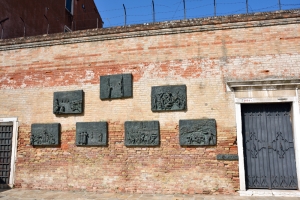To many, the “ghetto” is part of the city in which members of a minority group live. The term, however, was originally coined in Venice to describe the section of the city to which the Jews were restricted and segregated.
It all started towards the end of the 15th century when many Jews in Spain were given a choice to either convert to Christianity or be expelled from the Iberian peninsula. Many went to Rome, since they were welcomed by Pope Alexander VI, while those who went onto Venice, the authorities decided to confine them and the other Jews to a particular area known as “il borghetto” – better known to us today as the “ghetto.”
During this same time period, the Spanish monarchy confiscated all the wealth of the Jews being expelled and used these funds to finance Christopher Columbus’ voyage to the New World. Nevertheless, the ghetto, ultimately, made its way to the New World as well.
With the wave of immigrants to North America in the 19th and 20th centuries, the new ethnic ghetto areas included the lower east side of Manhattan, New York, which later became notably Jewish. The Little Italys, across the US, became the Italian ghettos. The Polish moved to the Pilsen section in Chicago and Polish Hill of Pittsburgh.
The Russians and the Ukrainians moved to Brighton Beach and renamed it the Little Odessa. New ghettos are springing up all over as new immigrant groups enter the USA. Most often, the old groups move out and up, and make room for the new folks coming from many developing countries all over the world.
 Today, the original Ghetto in Venice is the center of Jewish life in the city. The community counts for about 500 persons and there is also a yeshiva, a synagogue, a museum and several Judaica shops. Many Italian Jews return to the ghetto for religious services and tourists are taken there on daily excursions.
Today, the original Ghetto in Venice is the center of Jewish life in the city. The community counts for about 500 persons and there is also a yeshiva, a synagogue, a museum and several Judaica shops. Many Italian Jews return to the ghetto for religious services and tourists are taken there on daily excursions.
In New York, the Italian ghettos have shrunk to just a block or two, with stores selling  Italian goodies not normally found in other parts of the city. On my recent visit to Arthur Avenue in the Bronx, the owner of a confectionary store confided that 80% of her sales are to persons like myself, from suburbia, who come down to the Bronx in search of the past. This too will disappear as more sales are being done on the web sites.
Italian goodies not normally found in other parts of the city. On my recent visit to Arthur Avenue in the Bronx, the owner of a confectionary store confided that 80% of her sales are to persons like myself, from suburbia, who come down to the Bronx in search of the past. This too will disappear as more sales are being done on the web sites.
Che peccato!

